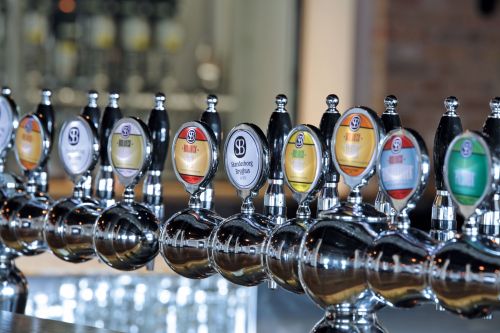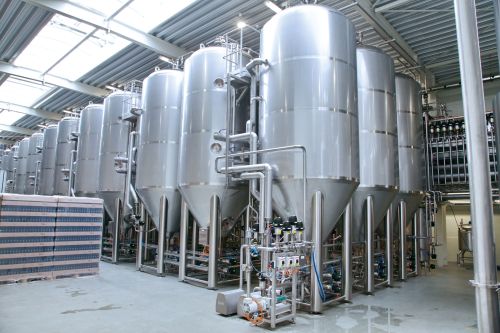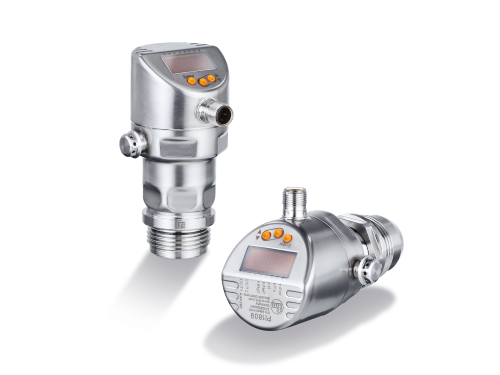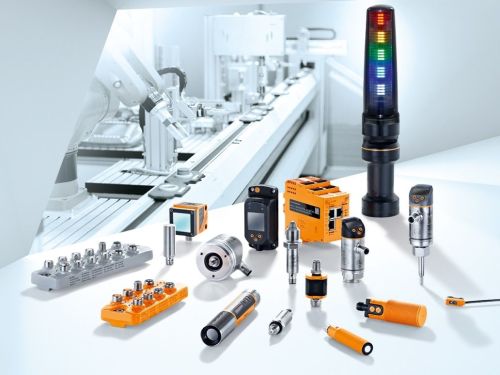Skanderborg Bryghus – Flexible sensors for individual beer
A variety of individual beers - this characterises the regional brewery Skanderborg Bryghus in the Danish town of Skanderborg. Unlike large commercial breweries, this brewery is largely promoted and operated by beer lovers on a voluntary basis. The demand was so immense that only three years after its foundation the brewery had to be expanded significantly. On this occasion, modern sensors from ifm were implemented to monitor the numerous tanks.
Allan Pedersen, Technical Manager of Skanderborg Bryghus, "present from day one", explains: "In 2015 our company started with a brewing capacity of 125,000 litres of beer per year. In 2018 and 2019 we significantly expanded the brewery that now has a capacity of 4 million litres per year."
The large expansion of the plant was carried out by the company GEA. Kåre Hjortkjær, GEA Denmark, was responsible for the electrical work. "GEA is an international engineering company. We make process systems for different industries. For this project we developed a completely new brewery.
It was our responsibility to decide on all sensors to be used in this brewery. There were no requirements for certain product brands from the brewery. The price was, of course, part of the decision. All the factors we considered pointed to ifm.
We selected the sensors needed for process monitoring because of their flexibility and focussed on the hygienic design. One requirement, for example, was to detect the level in a tank and to differentiate between beer and CIP liquid. We decided on sensors from ifm because we know the company from many years of good and close cooperation.
We measure pressure and temperature at several points in each tank and also monitor level. To do so, we installed several ifm sensors at each tank. The controller visualises how much beer is in the tank and what temperature it has. The many sensors make it possible to run the brewing process automatically so that production can be controlled with a minimum of employees.


Picture 1: Many different beers are brewed in the "Skanderborg Bryghus". Picture 2: Numerous tanks are precisely monitored for level and temperature.
Allan Pedersen adds: "GEA installed more than 300 ifm sensors. We can remotely set, calibrate and monitor them via IO-Link. We are happy that we can use the complete solution of a supplier instead of having to buy components from different manufacturers."
Most ifm sensors are installed at the numerous tanks. Three types of sensors are used especially frequently.
Resistant pressure sensor ensures a smooth process
An ifm pressure sensor, type PI2795, is mounted at the bottom of the tank. The level is determined via the hydrostatic pressure the beer in the tank exerts on the sensor's measuring cell. The measuring range of the sensor is -1 to 4 bar. It is resolved in steps of 0.005 bar. The measured value is transmitted to the plant controller via an analogue signal or IO-Link. Since the tank geometry is known the controller calculates the exact contents in litres from the measured pressure.
The measuring cell is mounted flush in the process connection, especially for use in food applications. This prevents build-up at the measuring point and allows residue-free cleaning, for example, during CIP cleaning. An important feature for the brewery: The sensor is designed for medium temperatures up to 80 °C. The sensor housing is made of stainless steel and has the protection rating IP 68 / 69K. Therefore, it is resistant to high-pressure cleaning with aggressive cleaning agents.
Intelligent level sensor ensures process reliability
The LMT102 is an electronic point level sensor for hygienic applications. When installed at the lower end of the tank, it signals empty state, when installed in the upper part it is used for overflow prevention. A second function of the sensor: it can differentiate different media. For the brewery this exactly means that the sensor detects if beer or CIP liquid is in the tank. In addition to point level detection, this information adds to the process reliability because a mixture of product and cleaning agents can reliably be excluded.
Especially in the food industry build-up and foam often make a reliable level detection difficult. As opposed to the vibration forks often used, the electronic point level sensor LMT from ifm ignores build-up. In the brewing process this ensures that foam does not affect level detection.
The smooth surface of the PEEK tip does not allow dirt or medium residue to adhere. Furthermore high-quality materials such as stainless steel and PEEK meet all requirements for demanding hygienic areas. Flush sealing is ensured by pressing the measuring probe onto the metal sealing edge of the adapter. This avoids dead space and contamination. Approvals such as EHEDG and 3-A certify the food conformity.
Precise temperature sensor for demanding applications
The temperature of the beer is exactly monitored in the upper, middle and lower part of the tank using ifm temperature transmitters of the series TA22 that have a high accuracy over the whole temperature range. Thanks to the good dynamic response they quickly react to temperature changes. These sensors also feature a hygienic design to meet the high requirements in the food and beverage industry.
IO-Link - the perfect basis for intelligent control
All sensors used in the brewery feature IO-Link. Advantage: As an alternative to the analogue signal, they also transmit the measured values as digital values. This avoids, for example, inaccuracies which may occur when AD converters are used. In addition, IO-Link allows extensive and easy parameter setting. Thus, the level sensor LMT can be adjusted to different media via IO-Link. For the pressure sensors it is, for example, possible to adjust switch points via the controller. This offers maximum flexibility, for example, when formulas are changed.
Moreover, IO-Link transfers the diagnostic data of the sensors to the controller. The LMT level sensor, for example, signals heavy build-up that prevents a reliable detection or differentiation of media.
Strong partner
Apart from high-performance products, ifm is distinguished by their close contact with customers. Kåre Hjortkjær from GEA emphasises: "Since the planning phase to the present day ifm has proven a valuable partner. We know the process and ifm knows their devices, so we can work well together.
Allan Pedersen from Skanderborg Bryghus sums up the cooperation: "I have been working with ifm since 1999 and I am very satisfied. We get support on site at all times and inspirations to implement our applications easily and reliably.

Pressure sensors for hydrostatic level detection (left) and temperature transmitters (right) are used to ensure a reliable brewing process.

Level sensor LMT from ifm as overflow prevention at the top of the tank.

Thanks to IO-Link measured values are reliably monitored at the control desk. Parameter setting and diagnostics of each sensor are also centralised.
Conclusion
ifm offers a wide range of powerful sensors to monitor the processes in the brewery reliably and at low cost. IO-Link sensors not only offer a maximum of automation and safety but also an optimum product quality. Both OEMs and customers appreciate the particularly close contact with customers according to the slogan "ifm - close to you!"



